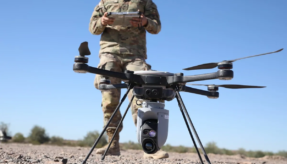
Digital Minister Matt Warman has announced new measures aiming to improve IoT security ahead of increased use.
The new strategy for IoT security has been developed with the National Cyber Security Centre (NCSC) and aims to encourage manufacturers to design devices with security in mind. Research suggests there will be 75 billion internet-connected devices, such as televisions, cameras, home assistants and their associated services, in homes around the world by the end of 2025.
Following on from the consultation, Government’s ambition is to further develop legislation that effectively protects consumers, is implementable by industry and supports the long term growth of the IoT. The government aims to deliver this legislation as soon as possible.
Matt Warman, Digital Minister, said: “We want to make the UK the safest place to be online with pro-innovation regulation that breeds confidence in modern technology.”
“Our new law will hold firms manufacturing and selling internet-connected devices to account and stop hackers threatening people’s privacy and safety.”
“It will mean robust security standards are built in from the design stage and not bolted on as an afterthought.”
This follows the government’s voluntary Secure by Design Code of Practice for consumer IoT security launched in 2018. The Code advocates for stronger cyber security measures to be built into smart products at the design stage, and has already been backed by Centrica Hive, HP Inc Geo and more recently Panasonic.
The Government is aiming to work with international partners to ensure that the guidelines drive a consistent, global approach to IoT security. In February 2019 the European Standards organisation published the first globally-applicable industry standard on consumer IoT security, which is based on the UK Government’s Code of Practice.
If you would like to join our community and read more articles like this then please click here.








